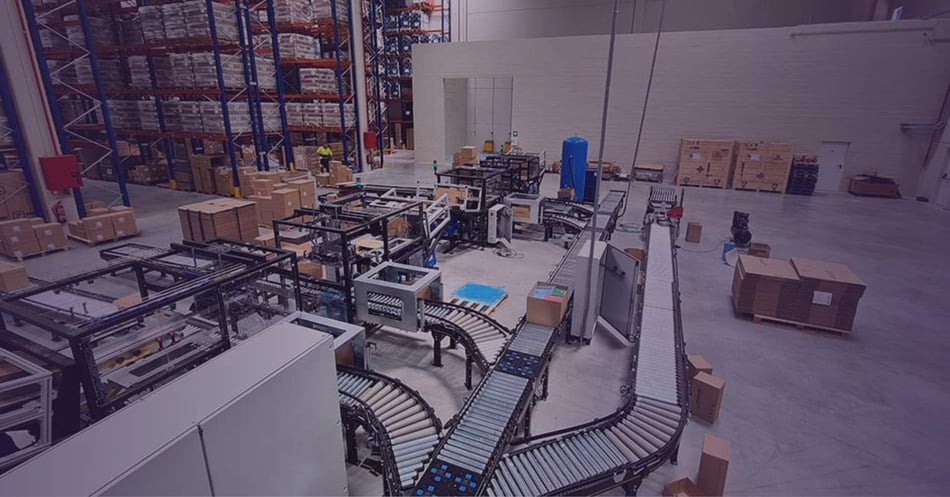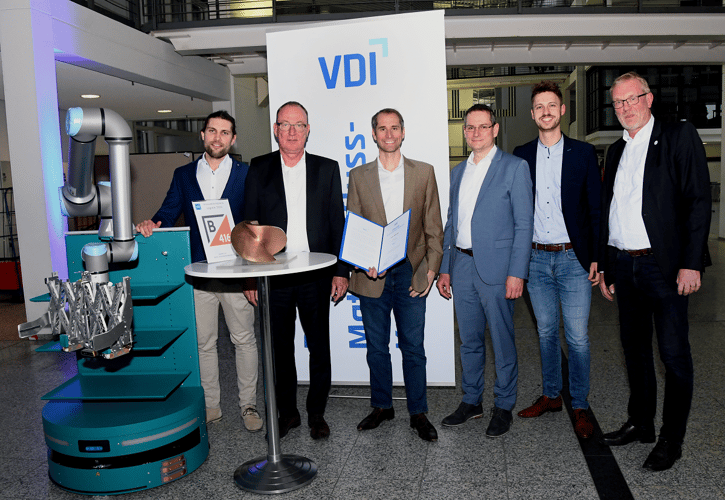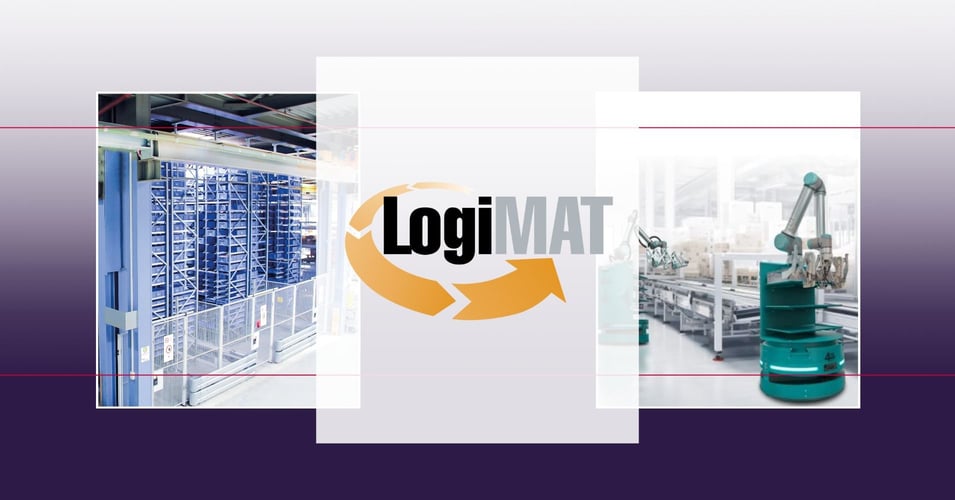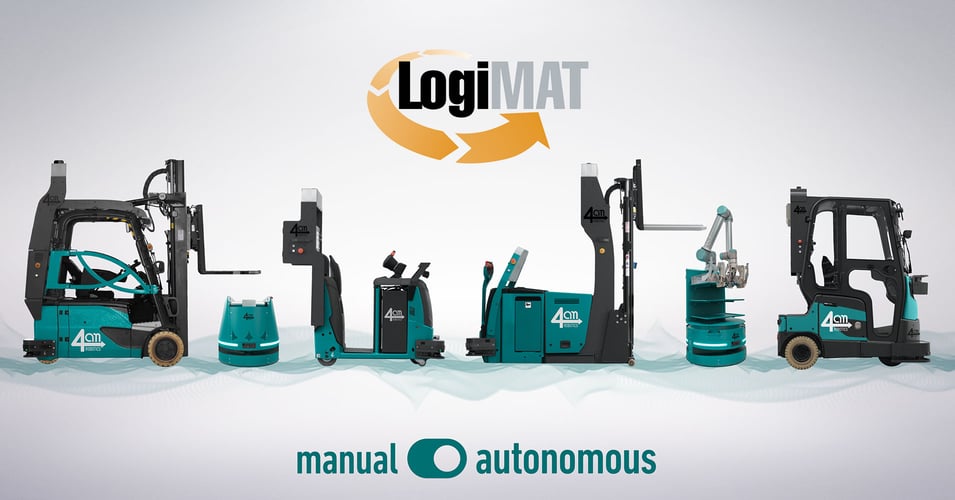
From the outside, the world of logistics centers may appear unchanged, but a silent revolution is taking place internally. Where pallets, shelves, and forklifts have long been in service, they are increasingly being supported by autonomous counterparts and flexible automation systems, and this is a trend that is only set to become more common over time. What’s driving this paradigm shift, and how is digital transformation of the logistics sector happening in practice? Join us as we take a deep dive into the realm of Logistics 4.0 in e-commerce, alongside experts from SCIO’s Standardized Logistics business segment, Modumaq.
The classic image of employees taking materials from shelves, packaging parcels by hand and affixing labels is gradually becoming a thing of the past. In this more modern era, intelligent conveyor systems and robots come to mind much more readily. This isn’t just a pipe dream, it’s becoming a reality in front of our eyes —Logistics 4.0 is close at hand. There are ultimately a multitude of drivers behind this drastic transformation.
• Speed• Full traceability
• Cost-effectiveness
are the order of the day in this highly competitive industry. That being said, additional factors have come into play over recent years, as Alfonso Flores García, Head of Standardized Intralogistics, Modumaq, explains:

"As we’re experts in custom intralogistics systems, the logistics realm is our home, and we’re witnessing the transformation first hand. Customers now expect deliveries yesterday, amidst supply chain issues due to political discrepancies, all while facing a booming e-commerce landscape. As if that wasn’t challenging enough, our clients are also struggling to cope with significant personal shortages. Companies across the industrial landscape are having to deal with these kinds of issues, but in logistics, they coalesce like mosaic pieces forming a complex picture."
The latest surveys show:
• In 27% of these cases, this shortage led to disruptions.
• 13% of those disruptions led to significant downtime and operational breakdowns in warehouse functions.
In the face of these challenges, automating repetitive tasks, such as the order preparation, is proving to be extremely lucrative. “It's crucial to emphasize that humans are by no means vanishing from the logistics of the future,” said Flores García. “Instead, our focus is on supporting employees with advanced technology, directing them toward crucial positions and tasks.”
The Smart Warehouse—From Theory to Practice:
A Spanish service provider from Madrid in the e-commerce and transport sector recognized the potential of Logistics 4.0 solutions and automated its 20,000 m2 warehouse. Automation isn’t just what happens at the flick of a switch however —it's a complex process. The company sought out Modumaq as an experienced partner to help them develop and implement an automated order preparation system.
Their innovative automation solutions for material flow, picking, packaging, palletizing, and shipment preparation gave Modumaq an edge over its competitors in terms of providing the ideal response to the challenges posed by the digital transformation of e-commerce & cargo logistics centers. Modular, standardized solutions from our Standardized Logistics business segment's portfolio are tailored to these centers’ specific needs.
What challenges came up over the course of the project?
“Our goal is to meet common requirements like resource efficiency, cost-effectiveness, and high productivity with our logistics solutions, of course. However, this project gave us an extra test in terms of having to prevent production errors throughout the entire logistics process due to numerous interfaces with upstream and downstream processes. And that’s not all, it’s not just a standard-sized product being stored and shipped. We had to ensure that multiple sizes were handled in a flexible way, all while keeping material supply running smoothly” said Miguel Salinas, Business Development and Sales at Modumaq.
How was the automation of order preparation implemented?
Modumaq devised a comprehensive automated system for full order preparation. This system includes the option to create cardboard boxes in various sizes automatically, as well as labeling, and shipment handling.
The "picking zone" for semi-automated commissioning, where pickers assemble goods for parcels, is also built into the system. Instead of conventional packing lists, Modumaq guides picking using their Pick-to-Light system, straight into designated pick slots with screen displays for each slot.
Miguel Salinas emphasized the point further: "Our system features seven automatic cardboard bottom formers in a variety of dimensions to enable it to flexibly adapt to current shipping demands. Control is facilitated by our proprietary software. Paperless picking ensures a high level of ergonomics and efficient handling for employee at the workstations."
Another great addition is Modumaq's specially designed belt conveyors known as "trash conveyors". They allow employees to dispose of cardboard scraps or empty boxes. By cleverly integrating a motorized roller transport system, the team seamlessly connects all areas of order processing.
How can you ensure that the process remains productive over time?
“To avoid process errors, we integrated various automated weight control points and checkpoints to identify and direct the cartons to the appropriate picking station. Additionally, each line has a second labeling machine as a backup for added security. This setup allows us to prevent disruptions or even a complete system halt in the event of a machine failure,” said Miguel Salinas.
Modumaq's expertise and integration capabilities means that the customer now has an innovative logistics system, equipping them for the industry’s demands; while the team is able to tick off another successful project, further solidifying their position as a reliable project partner.
Learn more about our Intralogistics portfolio here.

















